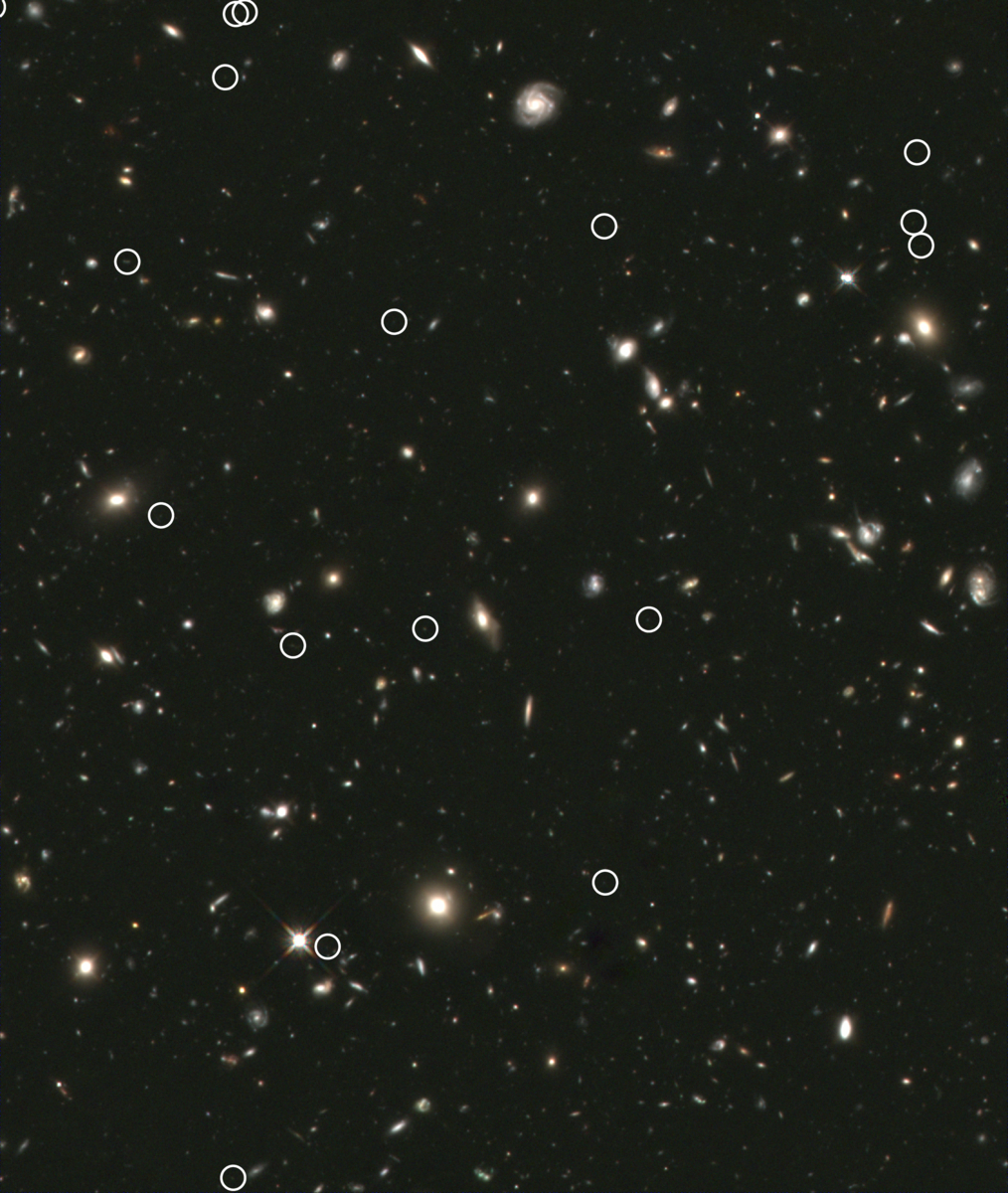Their evidence are recent observations made with the Hubble Space Telescope and they say the transformation of this neutral hydrogen into the mostly ionized gas that we see today is thought to have been caused by ultraviolet photons generated by primitive stars and galaxies.
How to know? How much ultraviolet radiation was produced by young stars at early times and what fraction of this ionizing radiation was able to escape from galaxies into the intergalactic medium is at least hypothesized with confidence so the researchers limited their search to properties of galaxies at redshifts near 7, when the Universe was only about 800 million years old.
The authors say that, obviously given some level of uncertainty in an observational Review, the observed galaxy population at that time was sufficient to produce the photons required for cosmic re-ionization.

Caption: A true-color image of the central regions of the Hubble Ultra-Deep Field (HUDF), constructed from the most sensitive near-IR imaging ever obtained. Based on these recent data it has been possible to identify a new population of the most-distant known galaxies (white circles) present when the universe was less than 800 Million years old. These galaxies may be responsible for ionizing intergalactic gas early in the universe's history. Credit: Ross J. McLure (University of Edinburgh, UK), James S. Dunlop (University of Edinburgh, UK), Richard S. Ellis (California Institute of Technology, USA), Brant E. Robertson (California Institute of Technology, USA), and Daniel P. Stark (University of Cambridge, UK).
The installation of the new Wide Field Camera 3 in the HST was a key factor. The first year WFC3/IR observations produced sufficient enough data on high red shift galaxies to make a reliable determination of the galaxy luminosity function but they also had to establish what percentage of the ultraviolet photons were needed to escape to allow reionization and if that happened. But they couldn't measure it directly due to limitations to current methods at redshift 7 so they inferred it based on redshift slopes in lower luminosity galaxies.
Is that bulletproof? No, but future Hubble data can narrow the statistical uncertainties.
Citation: Brant E. Robertson, Richard S. Ellis, James S. Dunlop, Ross J. McLure&Daniel P. Stark, 'Early star-forming galaxies and the reionization of the Universe', Nature November 4, 2010 v 468 doi:10.1038/nature09527





Comments